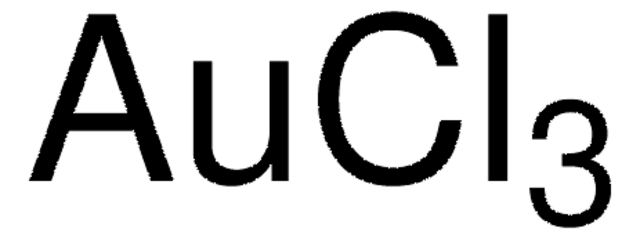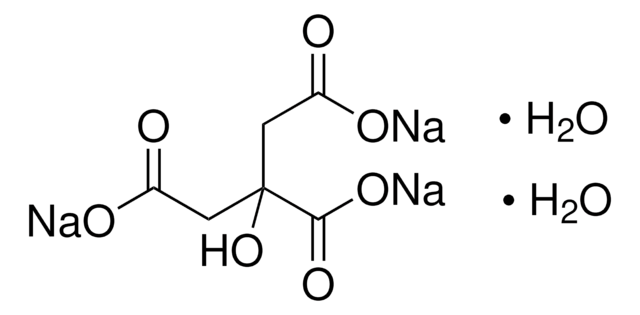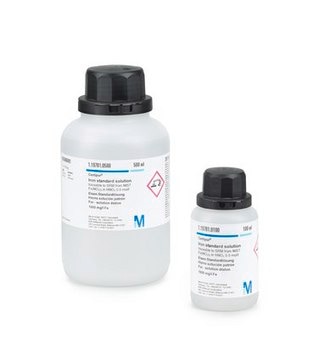484385
Gold(III) chloride solution
99.99% trace metals basis, 30 wt. % in dilute HCl
Synonym(s):
Auric chloride, Gold trichloride
About This Item
Recommended Products
Quality Level
assay
99.99% trace metals basis
form
liquid
composition
Au, 17 wt. %
concentration
30 wt. % in dilute HCl
impurities
≤150.0 ppm Trace Metal Analysis
density
1.637 g/mL at 25 °C
SMILES string
[H][Au](Cl)(Cl)(Cl)Cl
InChI
1S/Au.4ClH/h;4*1H/q+3;;;;/p-3
InChI key
VDLSFRRYNGEBEJ-UHFFFAOYSA-K
Related Categories
General description
Application
- As a starting material to prepare thiolate-stabilized gold nanoparticles.
- As an efficient catalyst for single-pot oxidative functionalization of alkanes and alcohols.
- As a catalyst for diastereoselective alkylation reactions with chiral benzylic acetates.
signalword
Danger
hcodes
Hazard Classifications
Acute Tox. 4 Oral - Aquatic Chronic 2 - Eye Dam. 1 - Met. Corr. 1 - Skin Corr. 1B - STOT RE 2 Oral
target_organs
Kidney
wgk_germany
WGK 3
flash_point_f
Not applicable
flash_point_c
Not applicable
Certificates of Analysis (COA)
Search for Certificates of Analysis (COA) by entering the products Lot/Batch Number. Lot and Batch Numbers can be found on a product’s label following the words ‘Lot’ or ‘Batch’.
Already Own This Product?
Find documentation for the products that you have recently purchased in the Document Library.
Customers Also Viewed
Articles
Single molecule electronics is the endeavour of constructing electronic circuitry with single molecules as the fundamental building block.
Noble-Metal Nanostructures with Controlled Morphologies
Plasmonic nanoparticles have unique optical properties that can be tailored to suit a variety of applications in the biotechnology1–8 and electronics9–16 industries.
Our team of scientists has experience in all areas of research including Life Science, Material Science, Chemical Synthesis, Chromatography, Analytical and many others.
Contact Technical Service










